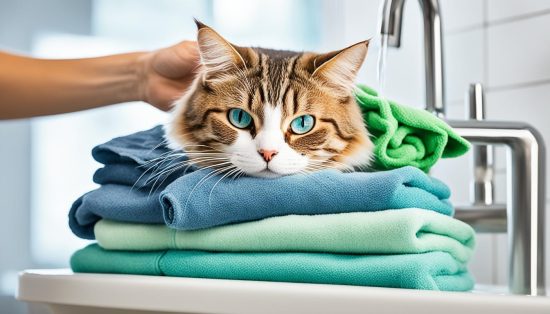Why Do Cats Like Catnip? Get the Answer Here
Cats go crazy for catnip due to a natural compound that mimics feline pheromones, triggering euphoria and playful behavior – why do cats like catnip? Find out here.
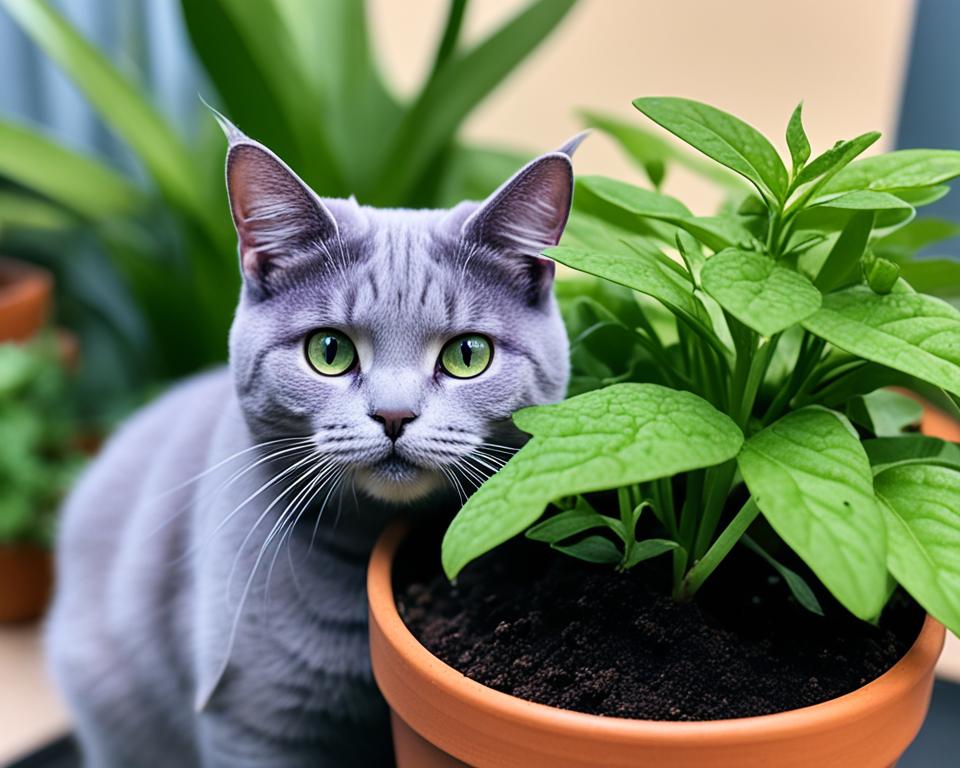
Have you ever wondered why do cats like catnip? What is it about this plant that captures our feline friends’ attention and sends them into a euphoric frenzy? Prepare to uncover the fascinating science behind why cats love catnip so much.
Cats are drawn to catnip due to a natural compound called nepetalactone, which mimics the structure of feline pheromones. When a cat encounters this compound, it triggers a response in the vomeronasal organ on the roof of their mouth, creating an immediate sense of excitement and happiness. This reaction is similar to the “high” experienced by humans when consuming coffee or sugar.
Cats like catnip because the scent molecules of nepetalactone are detected by these specialized receptors, leading to a range of playful behaviors like rubbing, rolling, licking, and pawing. Nearly two-thirds of cats possess a hereditary trait that makes them susceptible to catnip’s effects, while kittens under 3-6 months old and some older cats may not react at all.
What is Catnip?
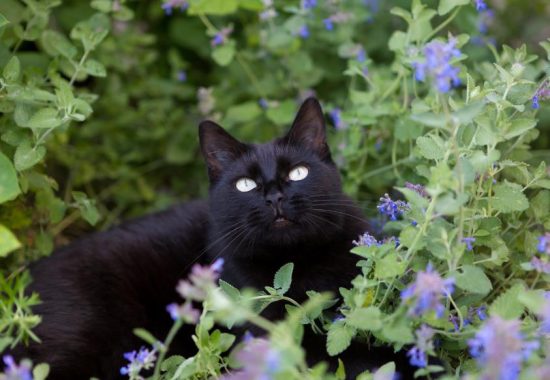
Catnip is a member of the mint family, with the scientific name Nepeta cataria. It is native to parts of Europe, Asia, and North America, and there are more than 250 types of catnip in the world. Catnip grows to be two to three feet tall, with strong stems and heart-shaped leaves. It can produce blue, white, pink, or purple flowers at the tips of the stems. Catnip contains an oil called nepetalactone, which is the key compound that attracts cats and triggers their euphoric reaction.
Catnip belongs to the Nepeta genus, which is part of the mint (Lamiaceae) family. Its scientific name is Nepeta cataria, and it is closely related to other members of the Nepeta genus, such as N. racemosa and N. grandiflora. Catnip is native to parts of Europe, Asia, and North America, where it has been cultivated for centuries. While the most common variety is Nepeta cataria, there are over 250 different types of catnip found around the world, each with slight variations in appearance and chemical composition.
The catnip plant typically grows to a height of two to three feet, with sturdy stems and heart-shaped leaves. The leaves have a grayish-green hue and are covered in fine, downy hairs. Catnip can produce small, clustered flowers in various colors, including blue, white, pink, and purple, at the tips of the stems.
Why Do Cats Like Catnip?
Catnip contains a chemical compound called nepetalactone that acts as a feline attractant, triggering a response in cats. When cats smell nepetalactone, it activates special receptors in the vomeronasal organ on the roof of their mouth, which senses the pheromone-like effect. This creates an immediate and intense sense of excitement and happiness in cats, leading to behaviors like rubbing, rolling, licking, chewing, and pawing at the catnip.
Nepetalactone: The Feline Attractant in Catnip
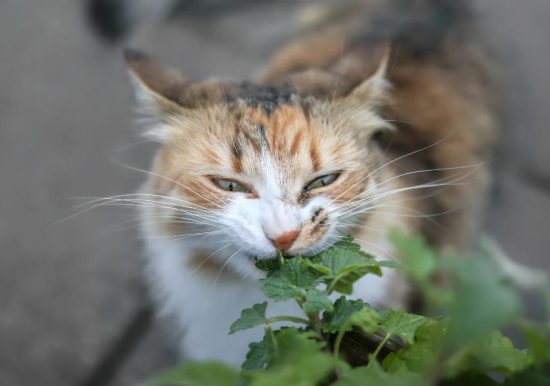
Nepetalactone is the active compound in catnip that elicits a strong reaction from cats. Found in the leaves and stems of the plant, nepetalactone binds to receptors in a cat’s nose, mimicking feline pheromones. This interaction triggers a series of neurological responses, making cats feel euphoric, playful, or relaxed. The sensitivity to nepetalactone is hereditary, and about 70-80% of cats exhibit a noticeable response to catnip.
How the Vomeronasal Organ Detects Catnip?
Cats detect catnip through their vomeronasal organ, also known as Jacobson’s organ, located on the roof of their mouth. When a cat sniffs or chews on catnip, nepetalactone particles are inhaled and bind to receptors in this specialized sensory organ. This connection sends signals to the brain, particularly affecting areas associated with emotions and behavior. The vomeronasal organ’s role in detecting pheromones and similar compounds explains the powerful and often amusing effects catnip has on cats.
The Effects of Catnip on Cats
Catnip has a range of effects on cats, often inducing behaviors such as rolling, rubbing, purring, and jumping. Some cats may become hyperactive and playful, while others may appear more relaxed and content. The effects usually last for about 10-15 minutes, after which the cat becomes temporarily immune to catnip’s allure for about 30 minutes before it can respond again. The reaction to catnip varies among individual cats, with kittens and older cats typically showing less interest compared to adult cats.
Giving Your Cat Catnip for the First Time
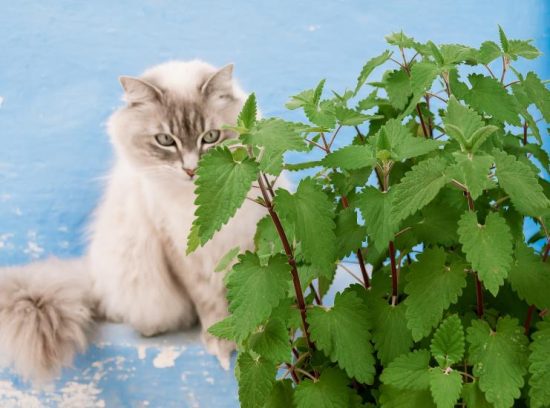
When introducing catnip to your cat for the first time, it’s important to do so gradually and with close supervision. Start by letting your cat play with a catnip toy for a minute or by sprinkling a small pinch of dried or fresh catnip on the floor. Observe your cat’s reaction closely, as some may become overstimulated and display anxious or aggressive behaviors like vomiting, diarrhea, and excessive zoomies or biting by your cat.
Introducing Catnip to Your Cat Safely
If your cat has a negative reaction to the catnip, remove it immediately. Gradually introducing catnip and monitoring your cat’s response will help ensure a positive and safe experience. It’s important to supervise your cat’s interactions with catnip, especially during their first exposure, to avoid any potential issues.
Pay close attention to your cat’s behavior after introducing catnip. Signs of over-stimulation include vomiting, diarrhea, and excessive zoomies or biting. If your cat exhibits any of these behaviors, remove the catnip right away and consult your veterinarian if the symptoms persist.
Other Uses for Catnip
In addition to providing entertainment and a euphoric experience for cats, catnip can also be utilized for other purposes. Some cat owners have found success in using catnip as a training aid, sprinkling it on scratching posts to encourage cats to use them instead of furniture. The calming and soothing effects of catnip have also been harnessed for its mosquito-repellent properties.
Planting catnip in the garden or yard can help keep mosquitoes and other pests away, benefiting both cats and their human companions. Studies have shown that catnip’s active compound, nepetalactone, is ten times more effective than DEET in deterring mosquitoes, making it a natural and gentle alternative for insect repellent.
Does Catnip Affect Other Animals?
While catnip is renowned for its captivating effects on house cats, its influence extends beyond the feline realm. Interestingly, larger feline species, such as lions, tigers, cougars, and leopards, have also been observed exhibiting similar reactions to catnip. These majestic big cats often become excited, playful, and relaxed when exposed to the herb, suggesting that the compound nepetalactone in catnip triggers a universal response among felines.
Catnip’s Effects on Big Cats
Studies have shown that lions, tigers, and other large cats often display behaviors akin to those seen in domestic cats when they encounter catnip. They may rub, roll, lick, and paw at the plant, seemingly experiencing a euphoric state. However, the response is not consistent across all big cat species. Some individuals, such as certain lions and tigers, have been observed to remain indifferent to the presence of catnip, suggesting that the reaction may be influenced by individual preferences or genetic factors.
Catnip and Dogs
Catnip’s effects are not limited to the feline family; it can also have an impact on our canine companions. Unlike the euphoric response seen in cats, the reaction in dogs is often more sedative in nature. When dogs consume catnip, they may experience a calming effect, becoming slightly drowsy or relaxed. However, it’s important to monitor the dosage, as too much catnip can lead to undesirable side effects, such as vomiting or diarrhea.
Safety Considerations with Catnip
While catnip is generally safe for cats, it’s important to monitor their intake and be aware of potential catnip safety concerns. Consuming too much catnip can lead to vomiting, diarrhea, or excessive drooling in cats. This catnip overdose can be caused by overindulgence, so it’s crucial to keep an eye on your feline friend’s catnip consumption.
In addition to the common catnip side effects, cats may also exhibit more severe reactions if they ingest too much of the herb. Symptoms of catnip overdose can include lethargy, disorientation, and even aggression. It’s important to monitor your cat’s behavior closely and remove the catnip if they seem overly stimulated or distressed.
Catnip in Human Products
Catnip is sometimes used as an ingredient in human products such as teas, seasonings, and sleep aids. These human products may contain other ingredients that could be toxic to cats, so it’s crucial to keep them out of your cat’s reach. If a cat ingests catnip-containing human products, they may be at risk of falling or other accidents due to the altered state it can cause. Always ensure that any catnip-infused human items are stored safely away from curious felines.
Growing and Storing Catnip

Catnip is relatively easy to grow, either in a pot or garden, and it’s safe for cats to nibble on as it grows. When cultivating catnip, it’s important to provide it with 5-6 hours of direct sunlight per day. This will help the catnip plant thrive and produce the essential oils that give it its distinctive aroma and appeal to felines.
Freshly harvested catnip is more potent than dried catnip, so you can snip leaves off the plant and use them immediately or dry them for later use. To store dried catnip, keep it in an airtight container in the freezer to preserve the essential oils and maintain its freshness. This simple storage method will ensure your catnip retains its potency and remains a reliable source of enjoyment for your furry friends.
It’s important to note that catnip should not be grown in window boxes, as the plant’s attractiveness to cats could increase the risk of your feline companion suffering a high-rise fall, which can be dangerous even from a second-story window. For the safety of your cats, it’s best to cultivate catnip in a secure outdoor space or in a pot on a sturdy surface away from open windows
FAQs on why do cats like catnip
Do cats enjoy being high on catnip?
Yes, cats generally experience a euphoric, “high” feeling when exposed to catnip due to a natural compound called nepetalactone that mimics feline pheromones.
What does catnip do to cats?
Catnip contains nepetalactone, a compound that triggers an immediate and intense sense of excitement and happiness in cats, leading to behaviors like rubbing, rolling, licking, chewing, and pawing.
Are cats supposed to eat catnip or just smell it?
Cats can both eat and smell catnip, as the nepetalactone compound is detected by receptors in the vomeronasal organ on the roof of their mouth. However, consuming too much catnip can lead to vomiting or diarrhea.
Why are cats obsessed with catnip?
Cats are attracted to catnip because the nepetalactone compound mimics feline pheromones and triggers a euphoric, “high” response in the brain’s amygdala and hypothalamus.
Do female cats like catnip?
Yes, both male and female cats typically exhibit a similar euphoric response to catnip, as the attraction is triggered by the nepetalactone compound rather than gender.



